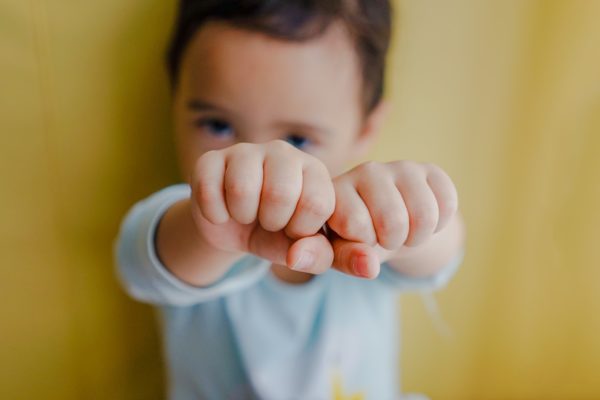
The three most likely warts to affect children are flat warts, plantar warts and common warts and all three are caused by the human papillomavirus or HPV. Young children are even more likely to develop warts because they are still busy growing and they have limited immunity. In addition, children easily get small cuts and lesions when they are playing or doing physical exercise, leading to breaks in the skin. Cracks in dry skin and wet, softened, fragile skin such as from prolonged water exposure can also allow the virus to invade the skin, causing the skin cells to grow rapidly and leading to a wart.
Flat warts
These are tiny – usually just the size of a pinhead – and smoother than other kinds of warts with their flat tops giving them their name. Similar to the color of your skin and looking like an extra bit of thick, smooth skin sticking up like a disc or a small patch, flat warts can affect any part of the body but usually on the face, fingers, hands, arms and knees (often close to scratch marks or other breaks in the skin that have allowed the virus to enter in the first place). They sometimes come in clusters with as many as a hundred together. Part of wart treatment for kids is discouraging them from scratching or picking these flat warts because they can spread them through the bloodstream to other parts of the body. Although sometimes flat warts will go away on their own, it is always best to treat them as early as possible to prevent them from spreading. If you or your child are prone to flat warts, look at boosting the immune system.
Plantar warts
Children of all ages are more likely to pick up this virus – and the discomfort and pain of plantar warts that follows – during the summer months as the virus thrives in warm, moist environments. Examples are shower floors, locker rooms and public swimming areas. So it is always safer not to walk barefoot in such places. The HPV virus needs to have a point of entry into the skin and when it does, there is thickening and damage to the skin followed by the appearance of plantar warts. These non-cancerous growths form round areas of rough skin with a dry crusty surface with tiny black dots deep inside. As the warts grow, they can become very painful as pressure is applied to them. Those tiny black dots are dried up capillary blood vessels. It does not take long for a plantar wart to become flattened and painful from the pressure of walking – rather like walking on a small stone. If you are not sure whether you have a plantar wart (as they can sometimes be confused with a callus) just squeeze the lesion between your fingers as if pinching. If this action is painful, you can be 100% certain it is a plantar wart.
Common warts
The good news is that common warts are not usually painful, appearing as small bumps of hardened skin or strange little growths on the fingers, hands, face or feet. Sometimes they grow around or under the nails, making them more difficult to get rid of. Common warts look like small cauliflowers, varying in color from light grey to yellow to brown or even grey/black. They can be round or irregular in shape and measure anything from 2mm to 10mm across. Sometimes they appear on their own and sometimes in clusters. Although common warts grow quite slowly compared to other warts, it is still wise to treat them. Left untreated, they can increase in number and size or take up to a couple of years to disappear. Educate your child to wash his hands and skin regularly and if he cuts or scratches his skin, to use soap and water to thoroughly cleanse the area because open wounds are more susceptible to the HPV virus infecting the skin and leading to warts.
